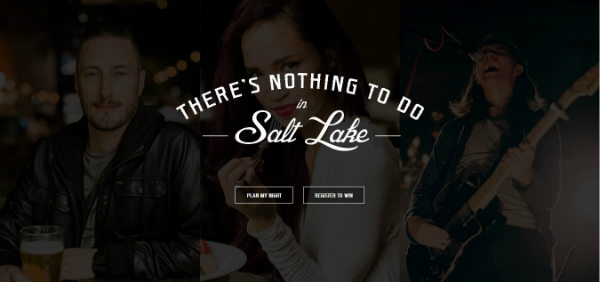
Cvent, an online platform for event management, just released its annual list of the top 50 cities in the U.S. for hosting meetings and conventions. Ranking among the bottom 10 for the third year in a row, Salt Lake City (#46) hopes that a new, tongue in cheek website aimed at meeting organizers can give it a boost come 2016 when it plays host to the American Society of Association Executives conference.
The new website, theresnothingtodoinsaltlake.com, seeks to correct common myths about the city’s once strict drinking laws and other limitations that have since been lifted. Photos of local dining, tourism, and nightlife scenes have been aggregated from visitors’ Instagram feeds to create an authentic feel. Once you’ve explored your entertainment and culinary preferences, however, the site feels limiting and requires you to navigate to the city’s official tourism website, visitsaltlake.com, for more information (from what I can tell, the two sites are not linked).
Still, the CVB should think twice before abandoning the site once next year’s ASAE conference is over. With stiff competition for attracting lucrative meetings and conferences, Salt Lake City needs to differentiate itself while squashing the “no fun” stigma that could be keeping people away. Breaking out of a typecast is no easy feat, and the site’s edgier campaign could be just what the city needs to do it, especially they tie it in more seamlessly with visitsaltlake.com.
So what can other destinations learn from Salt Lake City’s efforts to promote itself? Here are three important SLC lessons about marketing destinations to event organizers:
Some destinations seem to sell themselves when it comes to attracting event organizers. For most, however, it takes creative messaging and engaging content to draw the lucrative meetings and conferences crowd. Salt Lake City is a great example of a destination that changed its USP to rise in the ranks among top event contenders. Need help finding your destination’s USP? Drop us a line to get started.